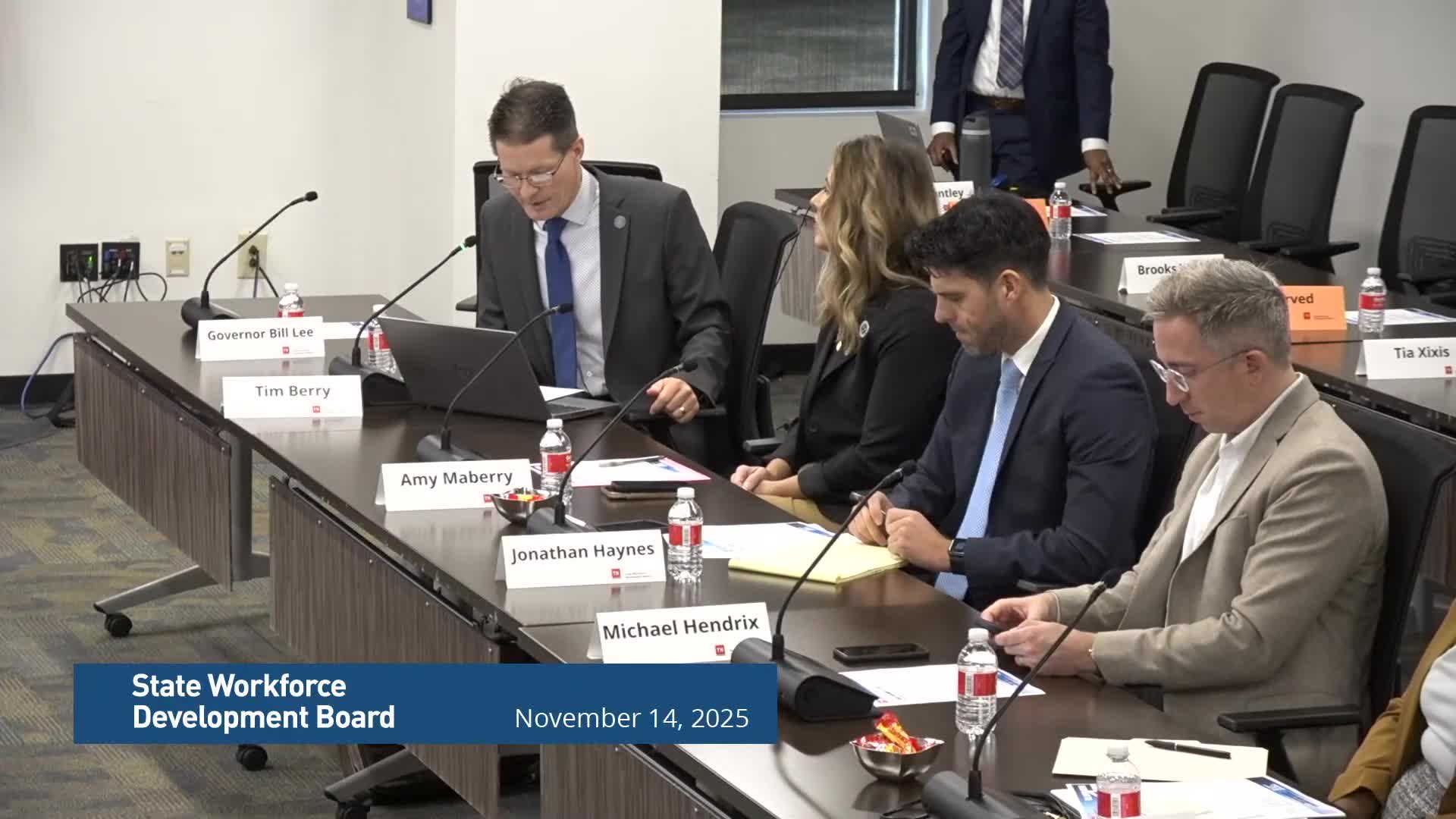State workforce board hears University of Tennessee analysis on AI and the threats to middle‑skill jobs
November 15, 2025 | Labor and Workforce Development, Deparments in Office of the Governor, Organizations, Executive, Tennessee
This article was created by AI summarizing key points discussed. AI makes mistakes, so for full details and context, please refer to the video of the full meeting. Please report any errors so we can fix them. Report an error »

Edward (Ed) Taylor, a research associate at the Boyd Center for Business and Economic Research at the University of Tennessee, told the State Workforce Development Board that artificial intelligence can both substitute for and complement human labor and that middle‑skill occupations with high exposure to routine tasks are most vulnerable.
"AI is a technology that enables machines to perform cognitive tasks usually associated with humans," Taylor said, summarizing the simple definition he used for the board. He explained a four‑bucket framework that distinguishes jobs by exposure to AI and by task complexity, and said the greatest disruption is likely to occur in high‑exposure, low‑complexity roles such as clerical and certain administrative positions.
Taylor cited national surveys showing employers report shortages of AI talent and underscored a statewide skills gap: "Amazon Web Service survey of 1,340 U.S. organizations, 3 out of 4 said they can't find the AI talent they need," he said, and he referenced reports from the World Economic Forum and McKinsey suggesting AI skill shortages are inhibiting transformation and growth. Taylor urged expanding digital‑skills training, AI literacy and employer‑based training partnerships so workers can be upskilled rather than displaced.
Board members pressed Taylor on robotics and potential manufacturing impacts. Taylor described an example of a Tennessee manufacturing plant that invested in automation and training, increased productivity and kept staff by shifting roles toward servicing and maintaining automated equipment. He cautioned that long‑term displacement research is still emerging and recommended the board continue periodic briefings so members can oversee education and workforce responses.
Why it matters: Board members heard that, while high‑skill professionals may use AI as a productivity tool, a large share of middle‑skill occupations perform repeatable, information‑heavy tasks that AI can perform now. The presentation framed workforce education and employer partnerships as primary levers for reducing the risk of population‑scale job disruption.
The board did not vote on policy during the presentation; members asked staff to bring additional briefings and an inventory of existing AI education efforts across K–12, community colleges and technical programs for future oversight.
"AI is a technology that enables machines to perform cognitive tasks usually associated with humans," Taylor said, summarizing the simple definition he used for the board. He explained a four‑bucket framework that distinguishes jobs by exposure to AI and by task complexity, and said the greatest disruption is likely to occur in high‑exposure, low‑complexity roles such as clerical and certain administrative positions.
Taylor cited national surveys showing employers report shortages of AI talent and underscored a statewide skills gap: "Amazon Web Service survey of 1,340 U.S. organizations, 3 out of 4 said they can't find the AI talent they need," he said, and he referenced reports from the World Economic Forum and McKinsey suggesting AI skill shortages are inhibiting transformation and growth. Taylor urged expanding digital‑skills training, AI literacy and employer‑based training partnerships so workers can be upskilled rather than displaced.
Board members pressed Taylor on robotics and potential manufacturing impacts. Taylor described an example of a Tennessee manufacturing plant that invested in automation and training, increased productivity and kept staff by shifting roles toward servicing and maintaining automated equipment. He cautioned that long‑term displacement research is still emerging and recommended the board continue periodic briefings so members can oversee education and workforce responses.
Why it matters: Board members heard that, while high‑skill professionals may use AI as a productivity tool, a large share of middle‑skill occupations perform repeatable, information‑heavy tasks that AI can perform now. The presentation framed workforce education and employer partnerships as primary levers for reducing the risk of population‑scale job disruption.
The board did not vote on policy during the presentation; members asked staff to bring additional briefings and an inventory of existing AI education efforts across K–12, community colleges and technical programs for future oversight.
View full meeting
This article is based on a recent meeting—watch the full video and explore the complete transcript for deeper insights into the discussion.
View full meeting
